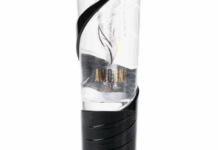PEM vs Method Acting differences, from trauma-based recall to body-based emotion, and learn which acting method better protects performers.
Actors beyond all want the same thing: to go emotionally deep without losing themselves. That’s where PEM vs Method Acting differences really start to matter.
One system leans on your memories, your wounds, your psychology.
The other, PEM — the Perdekamp Emotional Method — builds emotion from the body’s nervous system so you can work hard on set and still have energy left for dinner or after work adventures.
As PEM founder Stephan Perdekamp puts it:
“emotions are something biological, something mechanical that we can learn, can practice, and that we also can unravel.”Stephan Perdekamp
PEM founder
For performers, directors and even high-pressure professionals in other fields like medical and financial, this isn’t just technical. It’s about health, sustainability, relatability, and whether your craft still leaves room for actual life.
Why Compare PEM and Method Acting Now?
For decades, Method Acting has been the legend of New York conservatories and Hollywood soundstages. The mythology is intoxicating: stay in character, live like the role, suffer for the art.
We’ve also heard the hangover stories.
The actor who can’t turn it off.
The shoot that runs late.
The set where “genius” quietly looks like burnout. Mental health research has started to catch up with those stories, warning about emotional overexposure and trauma re-stimulation for performers. (Academia+1)
PEM was born as a counterpoint. Perdekamp started, as he says, with a simple wish: intense performances without harming the actor.
He explains:
“I started out as a theater director and wanted to have actors explore intense emotions, but in a safe way.”
Stephan Perdekamp
PEM founder
I didn’t want to be responsible for colleagues getting hurt or having long-term psychological problems. So I started to research what emotions were physically, so that we can produce them without the psyche involved…”
That’s the heart of PEM vs Method Acting differences: not “which is holier,” but which one lets people do brilliant work and still enjoy life off set.
PEM vs Method Acting Differences at a Glance
Method Acting: Psychology First, Body Second
Classic Method Acting asks you to become the character. You mine personal memories, stay in the role between takes, and use your own pain to hit emotional peaks.
Stephan shares one story many actors quietly relate with:
“[an actress] was supposed to shoot on a Friday,
very intense character, she had to cry, right?
And so the whole day, she was in that state.”
They postponed the scene all day, and eventually until Monday.
“so the whole weekend, she was a mess, because she tried to stay in that crying state…”
That’s “dedication” in Method culture — but in real life, it can feel like emotional torture.
Actors accept this partly because it helps them seem like a serious actor and partly because the industry still romanticizes suffering. A “fun” anecdote for the press junket, not a healthy way to live life.
PEM: Body-Based Emotion and Safe Access
PEM flips the order. Instead of convincing the mind it’s in danger, PEM trains the body to run specific emotional movement patterns on cue — like an athlete practicing drills.
Perdekamp describes what they found:
“in our nervous system, there are distinct locations that we call triggers,
which if activated, create complex movement patterns through the whole body.
And those movement patterns are emotions.”
Perdekamp
And Sarah Victoria sums up the core promise in one line:
“everyone knows you can be emotionally intense and safe at the same time.”
Sarah Victoria
Rather than dragging up trauma, actors learn to switch patterns on and off. Sarah talks about the freedom this gives her:
“you don’t actually play the emotion.
You have the emotion in the body because you’ve trained it already, so you don’t even focus on the emotion.”
That’s where PEM vs Method Acting differences are felt most on set. With PEM, you can shoot a brutal scene all afternoon, wrap, then still have the energy for friends and life without dragging the character along.
How PEM vs Method Acting Differences Play Out on Set
Burnout and Energy Economy
Method Acting often asks the mind to stay in a crisis that isn’t physically happening. You’re on a calm, well-lit soundstage, but your brain is living on a sinking boat for twelve hours.
Stephan notes what this does to the body:
“for the psychologically trained actors, they choose to stay in the role the whole day…
… and the body eats up energy.”
PEM separates the mental story from the physical pattern:
“what PEM changes is that the body goes into a state, but not the mind…”
“…now when the production crew goes on break, the actor can also go on break and just relax and save energy…”
Think of it like plugging the camera batteries into the charger every night instead of leaving the camera rolling in your living room. On a long shoot, that difference is the line between sustainable careers and quiet collapse.
Athlete of Emotion, Not Victim of Emotion
PEM teachers talk about creating an “athlete of emotion.” Emotions are no longer mysterious storms; they’re trained patterns. You can lift heavier emotional “weight” without injury. (Academia)
Sarah explains how she learned to uncross emotional wires:
“grief and aggression was mixed for for myself…
when I wanted to push through and become really aggressive…”
Sarah victoria
“…at that point, I actually started to, to burst out in tears…. I learned to separate those… and then you can actually start to mix and combine them.”
For directors, that means you can give precise notes — “more fear under the surface, a little aggression on that line” — and the actor can dial those levers with control, not self-harm.
It’s a system that still leaves room for spontaneity, relatability, sense of humor, and the full flavor of human behavior. It just doesn’t demand that anyone wreck their nervous system to get there.
Beyond Actors: Stress, Burnout and Everyday Life
One of the most surprising PEM vs Method Acting differences is this: only one of them really applies to non-actors. It’s PEM.
Method Acting is built for performance. You probably wouldn’t use it to handle your inbox in a Midtown law firm or your start-up pitch at the latest shared workspace.
PEM, though, has grown into wellness and health work. Stephan connects their stress model with the body’s fight/flight patterns (what psychology research has been mapping for years). ( fusion-journal.com)
He explains that long-term stress is like running fear and aggression at the same time — braking and flooring the gas together — until the system jams and finally crashes into burnout. PEM exercises can:
“calm the system down with exercises to let go of emotional movements. And then we look at the aggression pattern…”
Stephan Perdekamp
“…then we stop and deplete again. Now we look at fear and we do that successfully…
So that subconscious says, oh, actually, I’m working. This works. I just need to separate it.”
Actors use this to survive brutal shooting schedules. Everyday people use it to handle deadlines, family drama and city life — and still keep a fun-loving time away from work.
For a broader context on where PEM sits among other acting tools, you can peek at this overview of acting techniques from StageMilk, a long-standing resource for performers. StageMilk
FAQ: PEM vs Method Acting
Q: Is PEM a kind of “outside-in” acting technique?
A: The PEM team is clear that this is not just pulling faces or forcing muscles. As Stephan says,“we have to lead people from the outside into the inside so that later when they play, they move only electricity from muscle group to muscle group…” The work starts with awareness of movement, then sinks into the nervous system. In that sense, it’s more “inside-out” than many psychological methods, just from a biological angle.
Q: Does PEM use chakras or spiritual ideas?
A: No. Sarah is blunt about this: “we’re not doing any kind of chakra work. This is very important to us. We’re just working purely with the mechanics of the body and the nervous system directly.” It’s a body-based, science-informed approach focused on electricity, movement and concrete patterns.
Q: Can PEM and Method Acting mix, or do I have to choose one?
A: Many performers start in Method-based training and later add PEM. PEM’s body drills can give you safe, repeatable access to emotion; Method tools can still inform character history and given circumstances. The question isn’t “either/or,” it’s how to build a toolkit that protects your health, keeps your craft sharp, and still leaves room for the flavor of a fun-loving life.
Choosing an Acting Method That Doesn’t Eat You Alive
At the end of the day, PEM vs Method Acting differences aren’t an abstract debate. They show up in your sleep, your relationships, your ability to enjoy life after a heavy shoot.
Method Acting gave us legends, and some very broken legends. PEM is part of the next wave: body-based, technically sharp, protective of the human being doing the work.
If you’re an actor, director, or just someone who lives at high emotional voltage, it may be time to ask: What if my craft didn’t have to hurt? Explore PEM, compare it honestly to your current tools, and choose the path that lets you keep your career, your flavor, and your fun-loving self intact.
PEM vs Method Acting differences, from trauma-based recall to body-based emotion, and learn which acting method better protects performers.


















![Get Your Indie Movie Made (Responsibly): Jeff Caruso of Wrapbook Leads the AFM 2025 Film Finance Conversation [Exclusive Interview] American Film Market](https://dailyovation.com/wp-content/uploads/2025/11/AmericanFilmMarket2025-1-218x150.jpg)














